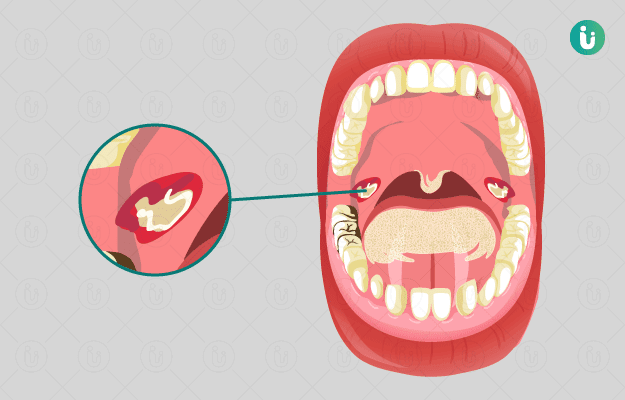Tonsil stones or tonsilloliths are calcified deposits of trapped cellular debris and microorganisms lodged inside the tonsils - small soft tissues positioned at the back of the throat.
There are mainly three types of tonsil in human body namely:
- Palatine tonsils: Located on either side of the back of the throat
- Adenoids: Located high up in your throat almost behind the nose
- Lingual tonsils: Positioned posteriorly at the base of the tongue
Tonsil stones are most commonly seen in palatine tonsils and appear as white or yellowish patches on the back of the throat. They are usually 1 to 2 mm in size but can be as large as 1 cm in diameter. Rarely, tonsil stones occur in the deeper layers of tonsil and become difficult to remove.
The calcified mass or tonsil stones consists of various mineral deposits like phosphorus, ammonia, magnesium along with calcium hydroxyapatite and calcium carbonate. The predisposing factor of tonsilloliths is supposed to be recurrent tonsillitis (inflammation of the tonsils) and calcification. However, tonsil stones can occur with or without a previous history of tonsillitis or any other inflammatory disorders of the body.
The size and appearance of the patch may vary as very small spot to big, hard calcifications that jut out of the tonsils. Some people also experience bad breath and/or suffer from a persistent cough. In most cases, small tonsilloliths detach themselves on gargling. However, when symptoms get severe, some prefer to get the particular tonsils removed.

 Doctors for Tonsil stones
Doctors for Tonsil stones  Tonsil stones articles
Tonsil stones articles

 Home Remedies for Tonsil stones
Home Remedies for Tonsil stones
























 Editorial Team
Editorial Team











